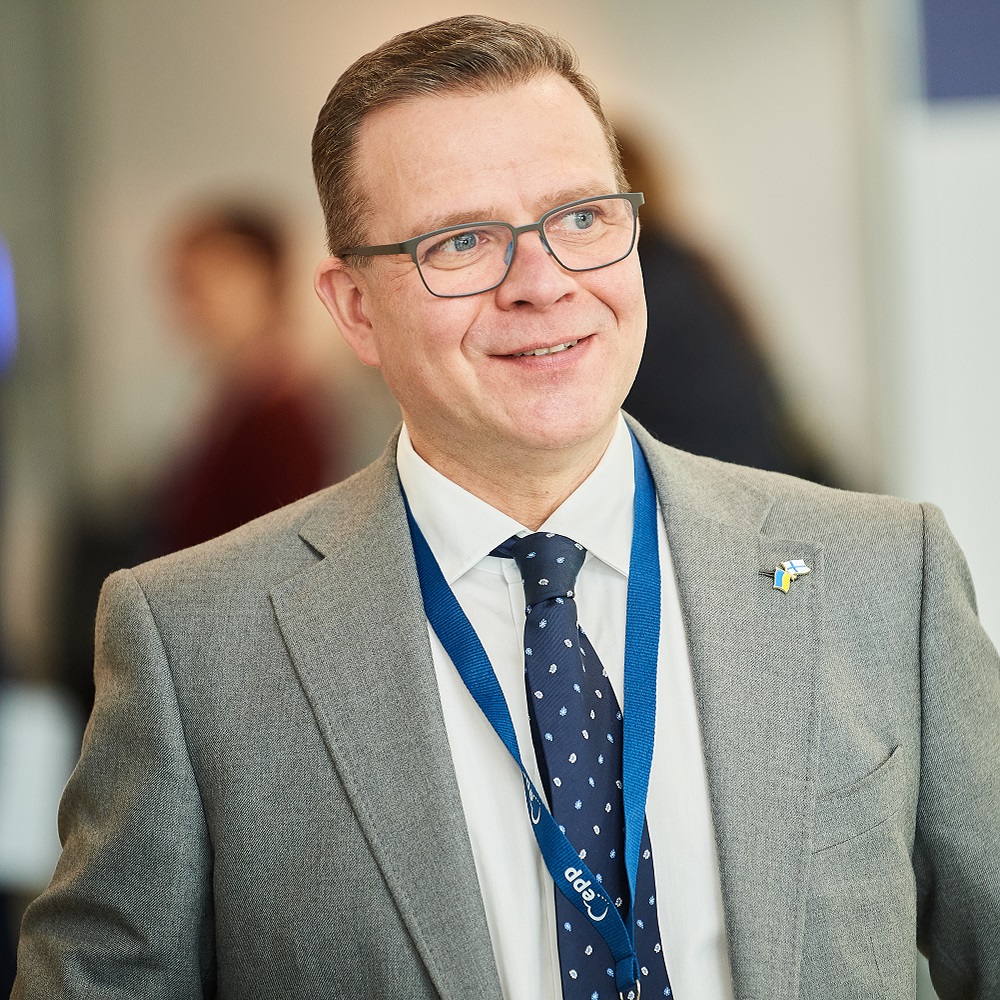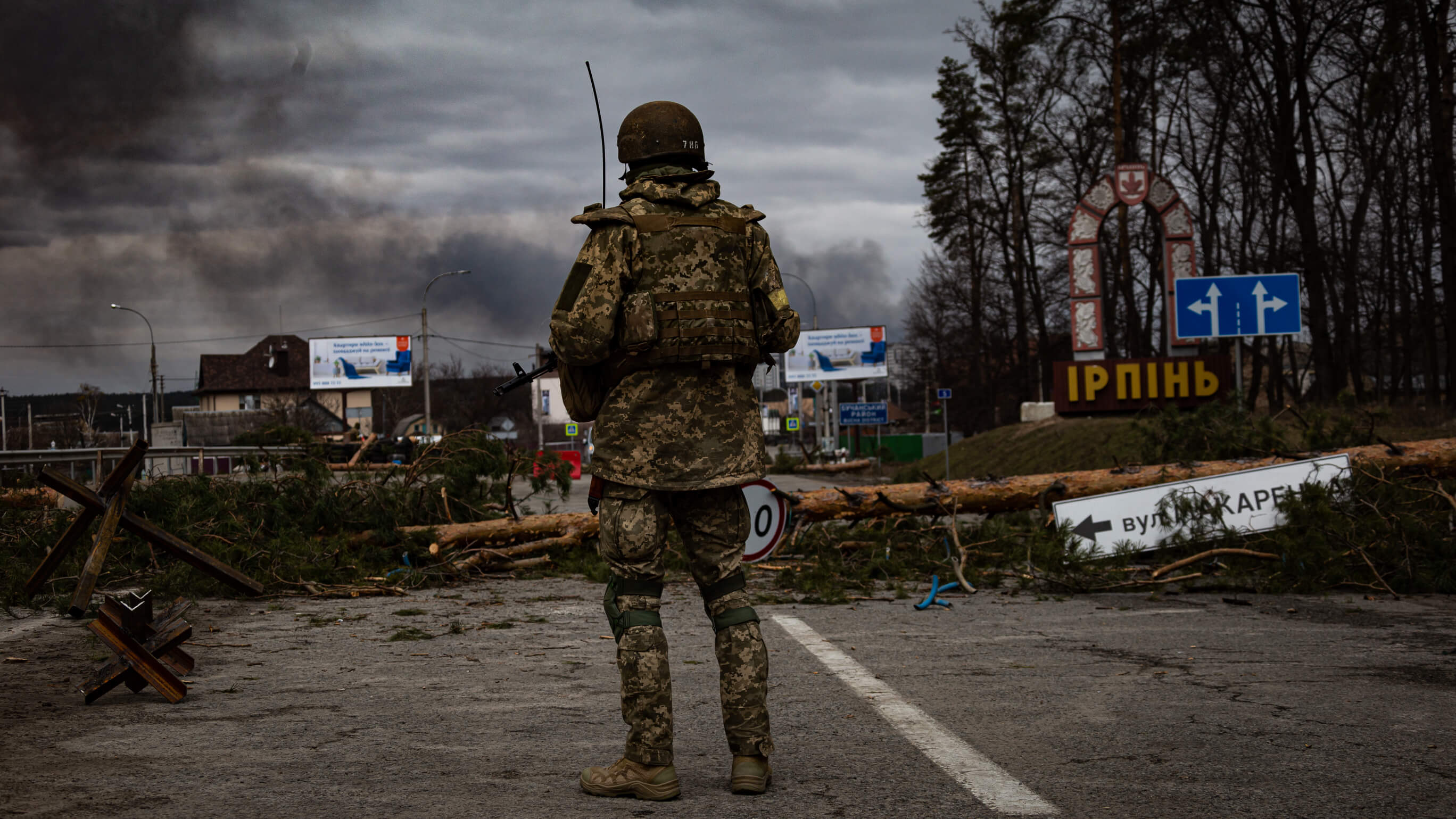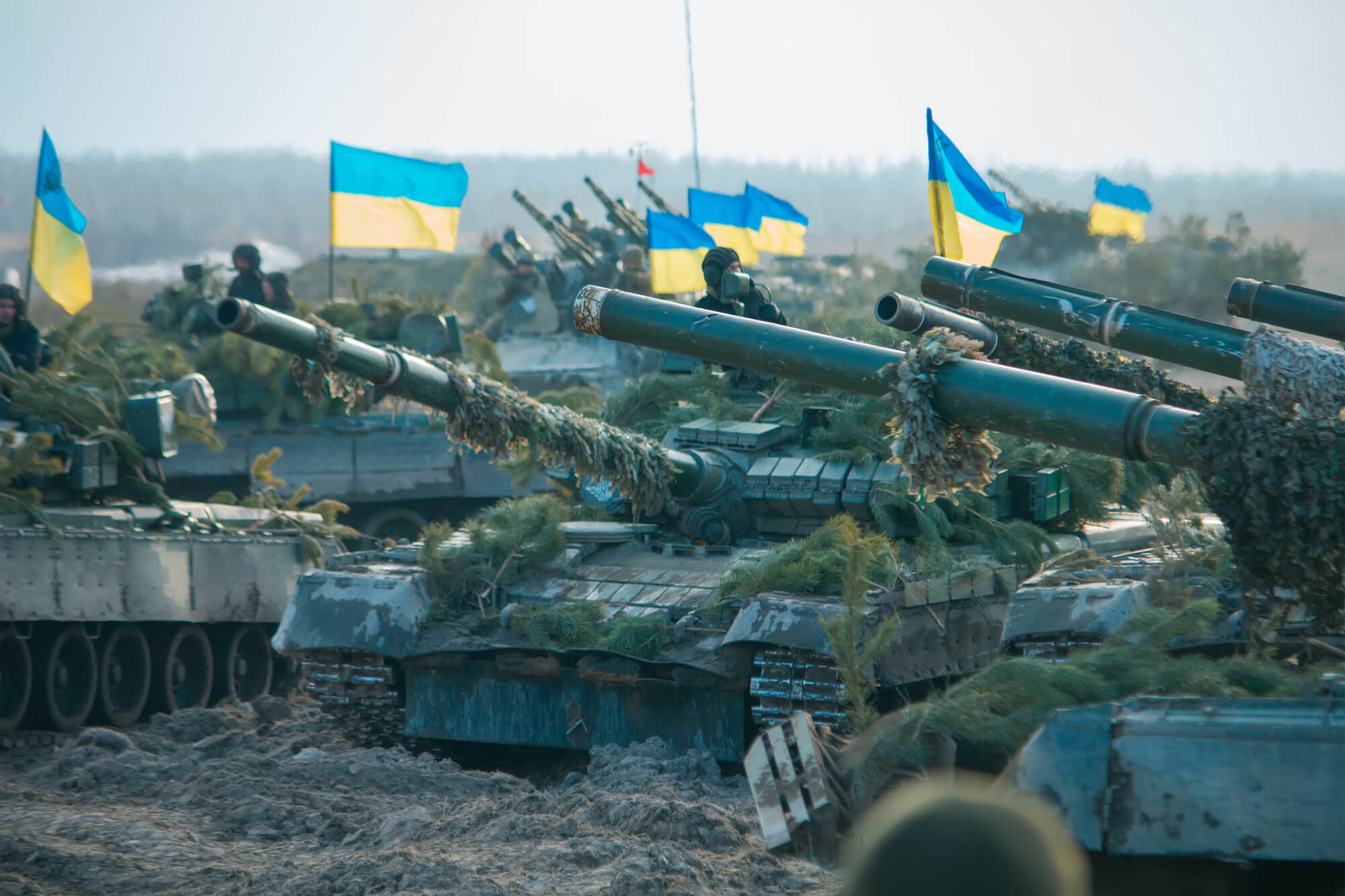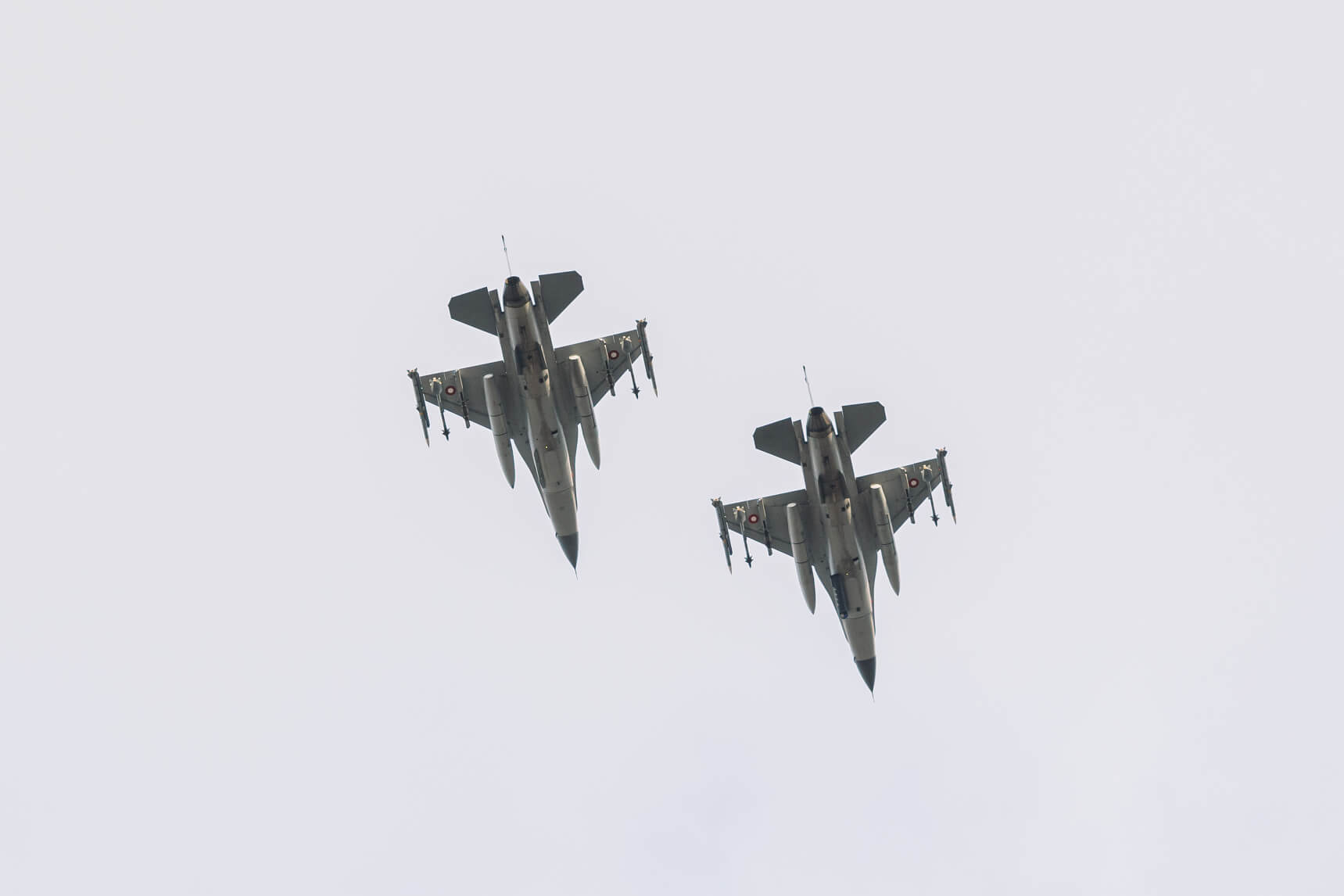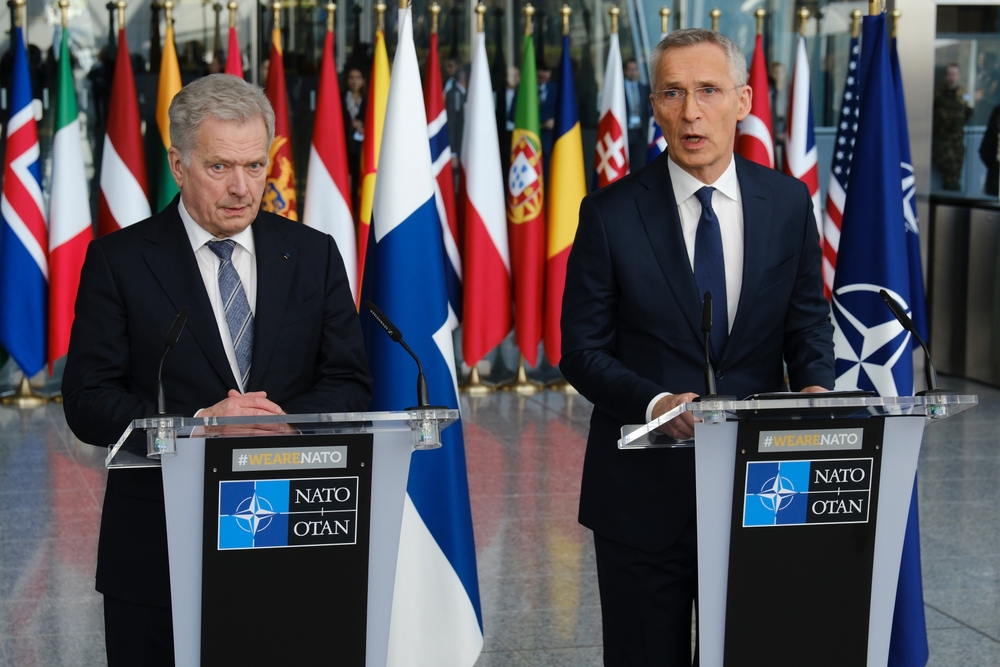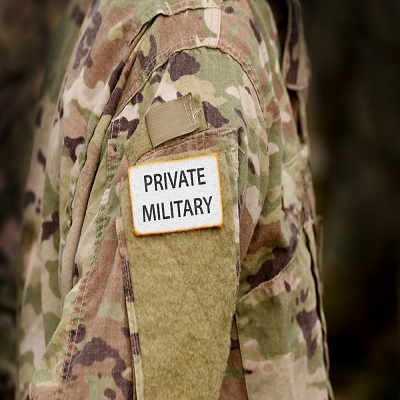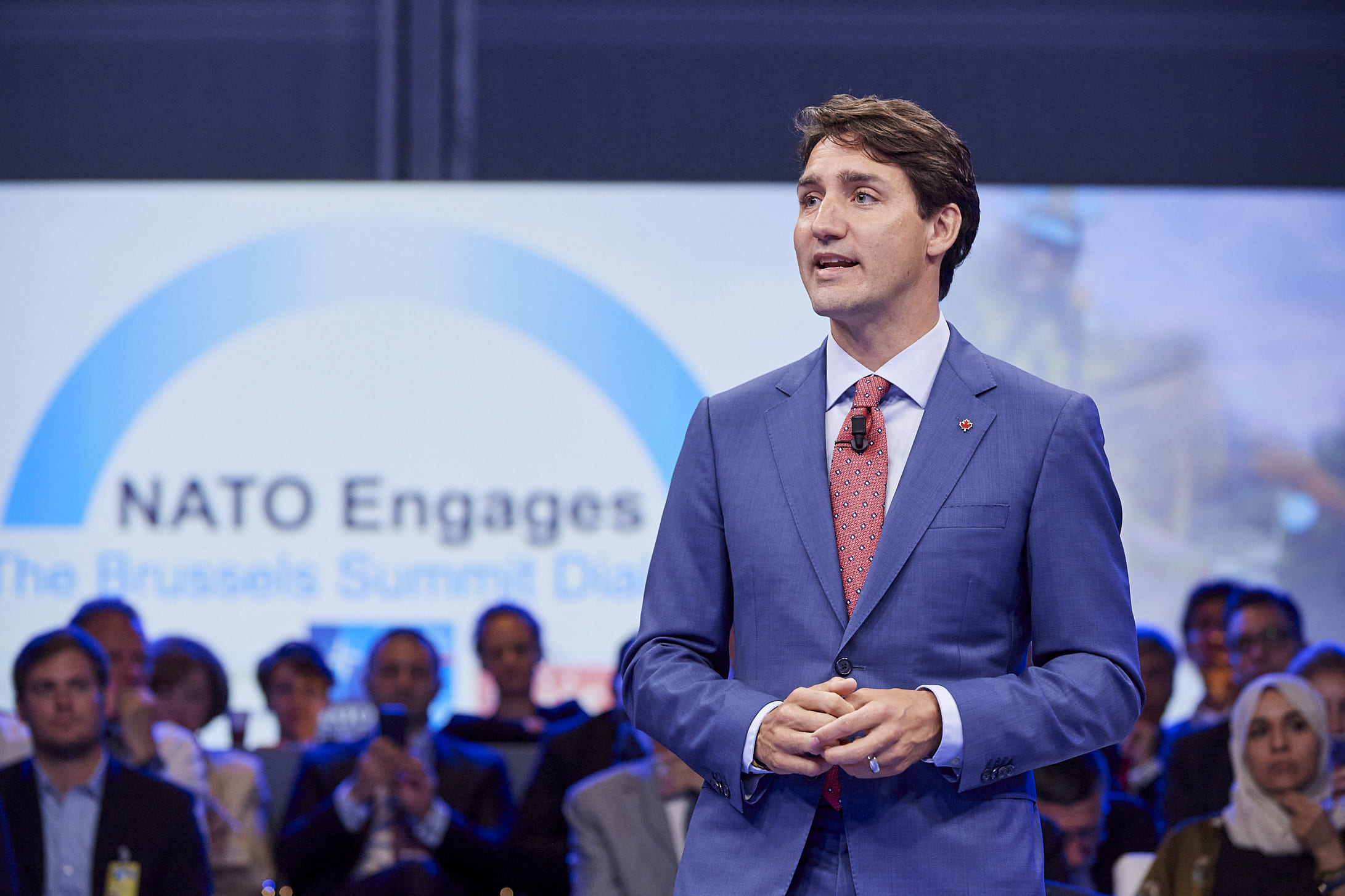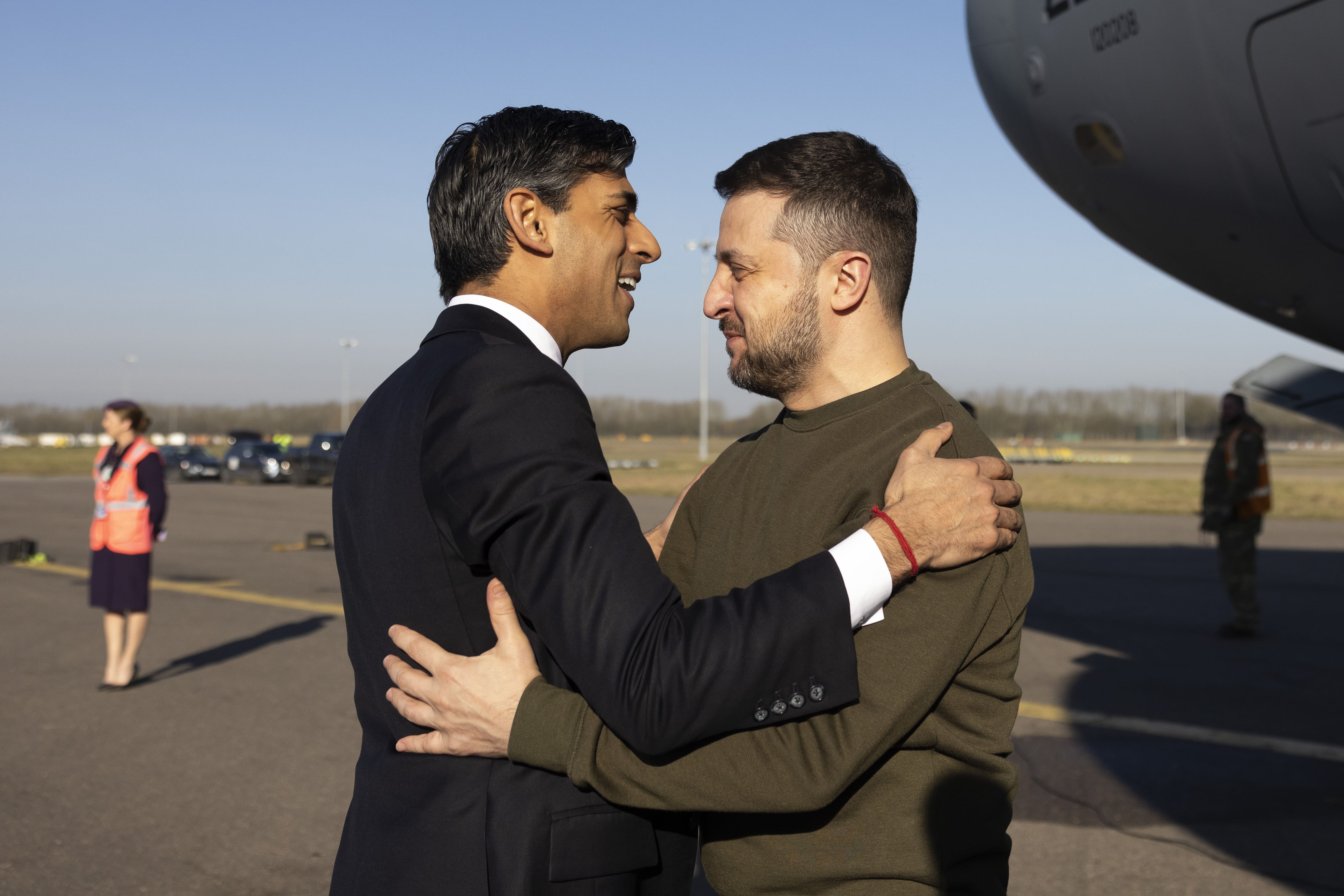NATO Needs a New Strategy for the Baltic Sea
by Luke Coffey
With Sweden and Finland soon joining the North Atlantic Treaty Organization (NATO), the alliance needs to act quickly to develop plans that acknowledge the new geopolitical reality in the Baltic Sea region. When Sweden and Finland become members, the alliance will need a comprehensive approach to security that considers the region as a whole—instead of dividing it into the traditional “Baltic” and “Nordic” camps. Since Peter the Great (1682–1725), Russia has had imperial designs on the region, and this is unlikely to change in the foreseeable future. Russia’s tactical-level defeats in eastern Ukraine should not inspire strategic complacency in NATO policymakers. They should view the entry of Sweden and Finland into NATO as the starting point, and not the finish line, for bolstering Baltic Sea security. If NATO takes the right steps, Sweden and Finland’s entry will allow the alliance to defend the Baltic states more easily and deter Russian aggression more effectively in the region. Among other things, the following measures can accomplish this goal: - Update and modernize NATO’s contingency plans in the Baltic Sea region- Emphasize the role of the Åland Islands, Gotland, and Bornholm, as well as the Danish Straits, in Baltic Sea contingency planning- Establish a NATO battlegroup in Finland- Increase the alliance’s maritime presence in the Baltic Sea- Establish a permanent military presence in the Baltic states- Establish a Baltic Sea Air Defense mission- Develop contingency plans for Belarus and Kaliningrad in the event of an armed conflict in the Baltic Sea regionA New Geopolitical Reality NATO needs to continuously update its contingency plans as the security landscape in Europe evolves and new members join the alliance. In the past, NATO has often been too slow to take these steps. For example, after the three Baltic States (Estonia, Latvia, and Lithuania) joined in 2004, NATO was hesitant to develop contingency plans for the Baltic states for fear that doing so might antagonize Russia. This complacency started to change in 2008 after Russia’s invasion of Georgia. At this time, NATO finally developed its first set of contingency plans for the Baltic states1 However, NATO did not start to take its security responsibilities on the eastern flank seriously until Russia’s first invasion of Ukraine in 2014. Immediately after the invasion, the United States deployed an infantry company to each of the three Baltic states on a rotational basis. 2 After the 2016 NATO Summit in Warsaw, this modest US rotational presence transformed into the establishment of four Enhanced Forward Presence (EFP) multinational battalions stationed in Poland and the Baltic states.3 In 2020, the alliance adopted new defense plans for the Baltics4 Since Russia’s second invasion of Ukraine in February 2022, NATO has agreed to increase its troop presence in the Baltics from a battalion-sized force to a brigade “where and when required5 Now that Sweden and Finland will soon be NATO members, the alliance will need to update its planning for the Baltic Sea region once again. The addition of Sweden and Finland to NATO will be good for the alliance for several reasons. Both countries possess robust militaries that will add significant capabilities to the alliance. Both have demonstrated the political will to deploy forces abroad to places such as Afghanistan, the Balkans, the skies over Libya, and sub-Saharan Africa. Both have provided significant military and humanitarian aid to Ukraine. Perhaps most importantly, Sweden and Finland’s entry into the alliance provides much-needed clarity regarding their expected roles in the event of Russian aggression in the region. Specifically, NATO can more easily defend the three Baltic states if Sweden and Finland are in the alliance. Without these two countries inside NATO, the three Baltic states are geographically isolated from the rest of the alliance. To the east of the Baltic states are Russia and Belarus. To the west, Lithuania shares a border with the Russian exclave of Kaliningrad (see figure 1). Only Lithuania shares a land border with another non-Baltic NATO member—a 65-mile border with Poland to the southwest, between Kaliningrad and Belarus, known as the Suwalki Gap. This geographical isolation makes NATO’s contingency planning for the Baltic states difficult. While Russian military planners always assumed Finland and Sweden would come to NATO’s aid in the event of a crisis, NATO’s military planners had no such guarantee. Once Finland and Sweden join the alliance, their role in NATO’s regional security planning will finally be clarified. However, the new geopolitical reality in the Baltic Sea means that NATO will need to update contingency planning for the land, air, and sea domains in the region: - Changes in the Baltic land domain. Finland has an 830-mile border with Russia. Though the Finnish military has adequately defended this border for decades, NATO ought to decide how it will integrate into Finland’s national defense plans. This is also true of Finland’s Åland Islands and Sweden’s island of Gotland—which NATO defense planning for the Baltic Sea region should now consider. Also, NATO will have to examine ground lines of communication (GLOCs) contingencies and defense plans for the entire Scandinavian Peninsula, and not just for Norway as has been the case for decades. As for the Baltic states, the Suwalki Gap will remain their main GLOC. - Changes in the Baltic air domain. Sweden and Finland’s entry into the alliance doubles the number of fourth- and fifth-generation fighters operated by NATO’s Nordic member states.6 NATO already has a well-established Baltic Air Policing mission for the three Baltic States. With Sweden and Finland in NATO, the alliance will need to expand the mission and geographical scope of the existing Baltic Air Policing operation to one focused on air defense. - Changes in the Baltic region maritime domain. Sweden and Finland’s entry into NATO will add another 95,775 square miles of economic exclusive zone and 2,780 miles of coastline to the alliance. The unique status of the Åland Islands (see figure 1) brings new challenges to NATO planners. Meanwhile, access to and use of Gotland bring opportunities. In addition, the Danish Straits and Denmark’s Bornholm Island will become even more important to NATO’s contingency plans in the Baltic Sea region. NATO’s Baltic Chain of DefenseThe Baltic Sea region is home to geographical locations of strategic importance for regional security. This makes Swedish and Finnish membership in NATO imperative. History has shown that most military operations in the Baltic region require access to what is today Swedish and Finnish air, sea, and land. For example, during the Crimean War (1853–56) and the Allied intervention in the Russian Civil War (1918–20), the then Swedish fortress of Viapori (today known as Suomenlinna in Finland) and the Åland Islands played crucial roles. During both world wars, the Danish Straits—which border Swedish waters and serve as a gateway to the Baltic Sea—were highly contested. During the Cold War, Denmark’s Bornholm was an area of contention between the Soviet Union and NATO. In the twenty-first century, these considerations have not disappeared. As Sweden and Finland join NATO, they will add two vital pieces of Baltic Sea real estate to the alliance: the Åland Islands and Gotland. Along with Denmark’s Bornholm, these islands form a Baltic chain of defense for NATO. Åland Islands The Åland Islands are a group of 6,700 Finnish islands where the primary spoken language is Swedish. They have always been considered some of the most important geostrategic real estate in the Baltic Sea. During the Crimean War, Sir Charles Wood, Britain’s first lord of the admiralty, said, “Those islands hung over Stockholm as much as Sebastopol hung over Constantinople7 Since the 1856 Treaty of Paris, which ended the Crimean War, the Åland Islands have been demilitarized and have remained neutral. For the victors, this was considered a major achievement of the Crimean War. British Prime Minister Lord Palmerston told the House of Commons in 1856 that demilitarization of the islands “placed a barrier between her [Russia] and the north of Europe.”8 The 1921 Convention Relating to the Non-fortification and Neutralization of the Aaland [sic] Islands reaffirmed the demilitarized and neutral nature of the islands and gave Finland the primary responsibility to guarantee this special status. Article 7 of the convention states that “if the neutrality of the zone should be imperiled by a sudden attack either against the Aaland [sic] Islands or across them against the Finnish mainland, Finland shall take the necessary measures in the zone to check and repulse the aggressor.”9 When Finland becomes a member of NATO, Helsinki’s military and security responsibilities to ensure that the islands remain demilitarized and neutral will also become, by extension, a NATO responsibility. Therefore, in a time of armed conflict, NATO must provide any assistance Finland needs to ensure that the special status of the Åland Islands remains in place. Gotland The Swedish island of Gotland is slightly smaller than Guam and sits approximately 60 miles off the coast of Sweden. It is strategically located halfway between Sweden and Latvia in the middle of the Baltic Sea. Due to its central location, there is a concern that Russian troops based in nearby Kaliningrad would attempt to occupy the island and deploy anti-aircraft and anti-shipping weapons platforms in the event of a war with NATO. Sweden maintained a permanent military garrison on the island for hundreds of years until 2005, when it decided to demilitarize the island as part of a downsizing program for the Swedish Armed Forces. One year after Russia’s 2014 invasion of Ukraine, the Swedish government announced plans to remilitarize the island. Today, around 400 Swedish soldiers are permanently stationed on the island.10 Stockholm plans to boost the defense of Gotland further and to ensure it can reinforce the island quickly and easily if ever required. The Swedish government’s 2020 Total Defense 2021–2025 legislation stated,11 “Also important is enhancing the units on Gotland, where the core comprises a mechanized battalion with reinforcement resources.” In recent years, Gotland has also been the focus of US- and NATO-led military exercises in the region. For example, during the annual BALTOPS exercise in 2022, US Marines rehearsed amphibious operations on Gotland. Bornholm Bornholm is a Danish island strategically located at the mouth of the Baltic Sea. It recently made the news after sabotage—likely from Russa—damaged the Nord Stream pipelines nearby. At the end of World War II, the Soviet Union briefly occupied the island but returned it to Denmark in 1946. At that time Denmark and the Soviet Union unofficially agreed that NATO would not use the island, although Denmark maintained a military presence there during the Cold War. In June 2014, Russia carried out a simulated strike against Bornholm during an annual political festival with 90,000 attendees, including most of Denmark’s political elite.12 In the aftermath of Russia’s 2014 invasion of Ukraine, Danish policymakers began taking the island’s security more seriously. US policymakers have also noticed the island’s importance. In May 2022, as part of the DEFENDER-Europe 22 multinational exercises, the US military made history when it transported a US M142 High-Mobility Artillery Rocket Systems (HIMARS) battery in a C-17 Globemaster III that landed on Bornholm as part of a “rapid infiltration exercise,”13 the first time such a US military presence had occurred on the island. According to the US Army, the goal of the exercises was “to show the strategic reach of the HIMARS rocket system.” 15 Predictably, the Russian ambassador to Denmark, Vladimir Barbin, complained and warned that such a military exercise on Bornholm risks turning the island from a “peaceful haven into a potential military bridgehead.”15 It would be extremely naive to think Russia did not factor the importance of the Åland Islands, Gotland, and Bornholm, as well as the Danish Straits, into its Baltic Sea contingency planning. NATO would be irresponsible if it did not do the same. The Kaliningrad Factor Not all the strategic spots in the Baltic Sea are part of NATO, as Kaliningrad Oblast is also important to regional security. Kaliningrad is a small Russian exclave along the Baltic Sea bordering NATO members Lithuania and Poland. In terms of size, it is slightly larger than Connecticut and has roughly the same population as Delaware. However, it plays an outsized role in Russia’s projection of power. Kaliningrad is part of Russia’s Western Military District and is home to two air bases (Chernyakhovsk and Donskoye) and Russia’s Baltic Fleet headquarters. Russia also has facilities for storing tactical nuclear weapons in Kaliningrad,16 and some military strategists suspect that Russia keeps nuclear weapons there. 17 Before the 2022 Russian invasion of Ukraine, Moscow maintained approximately 25,000 Russian troops and security personnel, hundreds of tanks and armored vehicles, S-400 air defense systems, P-800 anti-ship cruise missiles, and sizeable air and naval assets in Kaliningrad. Since 2016, Russia has also maintained Iskander-M short-range ballistic missiles in Kaliningrad. The Iskander-M missile, which has a suspected range of 310 miles, can threaten Gotland and Bornholm with nuclear or conventional warheads from here. However, Russia has reportedly sent some of its forces, weapons systems, and other platforms to Ukraine since the Kremlin launched its invasion in February 2022.Before the 2022 Russian invasion of Ukraine, Moscow maintained approximately 25,000 Russian troops and security personnel, hundreds of tanks and armored vehicles, S-400 air defense systems, P-800 anti-ship cruise missiles, and sizeable air and naval assets in Kaliningrad. Since 2016, Russia has also maintained Iskander-M short-range ballistic missiles in Kaliningrad. The Iskander-M missile, which has a suspected range of 310 miles, can threaten Gotland and Bornholm with nuclear or conventional warheads from here. However, Russia has reportedly sent some of its forces, weapons systems, and other platforms to Ukraine since the Kremlin launched its invasion in February 2022.18 In reality, there is no accurate open-source assessment of what Russia maintains in Kaliningrad today. Kaliningrad is important for Russia’s geopolitical aims in the Baltic Sea for three reasons: 1. Kaliningrad allows Russia to project power in the region in a way it would be unable to without access to the exclave. If Moscow wanted to try capturing the Åland Islands, Gotland, or Bornholm, it would do so using Kaliningrad. 2. Kaliningrad serves as the cornerstone of Russia’s anti-access/area denial (A2/AD) strategy in the Baltic Sea region. If Russia has control of Kaliningrad during an armed conflict, NATO’s ability to act in the Baltic Sea region will be limited. 3. The possibility that Russia could access Kaliningrad through NATO and European Union member Lithuania offers Moscow an easy and low-cost way to increase tensions with the West. For example, in July, Russia falsely accused Lithuania of illegally blocking the transit of certain items to Kaliningrad.19 Also, many of the aerial incidents that cause NATO planes from Baltic Air Policing to scramble involve Russian planes flying to or from bases in Kaliningrad. Recommendations In the aftermath of Russia’s invasion of Ukraine and with two states becoming new NATO members soon, the Baltic Sea region requires increased attention from the alliance’s leaders, who will need to develop a new strategy. The US should lead the way inside NATO to prepare the alliance to deal with these changes. The US and NATO can better prepare for contingencies in the Baltic Sea region by taking the following steps: - Update and modernize NATO’s contingency plans in the Baltic Sea region. With Sweden and Finland coming into the alliance, the geopolitical reality in the Baltic Sea region has changed. NATO should update its plans for the Baltic Sea region. It is in America’s interest to lead this process. - Publish a special annex to NATO’s 2022 Strategic Concept. NATO published its long overdue Strategic Concept at the 2022 Madrid Summit, but there was no formal input from Sweden and Finland since neither were members at the time. When both formally become members, NATO should work with Stockholm and Helsinki to publish a special annex to its 2022 Strategic Concept to factor in the new geopolitical reality in the Baltic Sea region. - Consider the special status of the Åland Islands in NATO’s plans. There is no doubt that Russia factors the importance and location of the Åland Islands into its war planning. The demilitarized and neutral status of the Åland Islands makes contingency planning tricky for NATO. When developing its approach to these islands, the alliance should look at how the Norwegian archipelago of Svalbard—which shares some legal similarities with the Åland Islands—factors into NATO’s defense planning. NATO should also work in close consultation with the Finnish government and, where necessary and appropriate, the devolved government in Åland. - Call for a special North Atlantic Council (NAC) meeting to be held on Gotland after Sweden joins. The NAC is the principal decision-making body inside NATO. The secretary general chairs its meetings. A special NAC meeting on Gotland would bring immediate awareness of Baltic Sea security issues to the Alliance. Establish a NATO enhanced forward presence (EFP) battlegroup in Finland. After the 2016 NATO Summit in Warsaw, this modest US rotational presence transformed into the establishment of four EFP multinational battalions stationed in Poland and the Baltic states.20 At the 2022 NATO Summit, the alliance added EFP battlegroups to Hungary, Bulgaria, Romania, and Slovakia. When Finland joins NATO, it will be another frontline state on the eastern flank and should host an EFP battlegroup. As a confidence-building measure, NATO should ask Turkey to participate. - Lead efforts to establish a Baltic Sea Air Defense mission. While the Baltic Air Policing has been useful for policing the region’s airspace, more needs to be done. With Sweden and Finland inside NATO, and with Russia’s increased aggression, a robust and expanded Baltic Sea Air Defense mission is needed. Air policing alone is no longer enough. - Encourage the European Centre of Excellence for Countering Hybrid Threats in Finland to receive NATO accreditation. Founded in 2017 to establish best practices for countering hybrid threats, the European Centre of Excellence for Countering Hybrid Threats already cooperates closely with NATO. The alliance should move to accredit the center to formally bring it into the existing family of NATO’s 28 accredited centers of excellence. This would be a quick and easy way to “fly the NATO flag” in Finland after it joins. - Establish a permanent military presence in the Baltic states. The deployment of the rotational EFP battlegroups to the region is a good start, but NATO ought to do more. The threat from Russia will remain for the foreseeable future. NATO needs to show an enduring commitment to the region by permanently stationing armed forces in each of the three Baltic states. - Factor Kaliningrad into NATO’s Baltic Sea region contingency planning. The US needs to work with its NATO allies to develop a strategy that deals with the Russian A2/AD capabilities in Kaliningrad in the event of an armed conflict. In particular, this effort requires close cooperation and planning with Poland. NATO cannot carry out any credible defense of the Baltic Sea region without neutralizing the threat from Kaliningrad. - Increase the maritime presence in the Baltic Sea. In recent months the US has increased its maritime presence in the Baltic Sea, but it can do more. Under the authority granted in the 1936 Montreux Convention, Turkey has blocked all warships from entering the Black Sea through the Turkish Straits while fighting continues in Ukraine. Last year, the US Navy spent a total of 111 days in the Black Sea.21 While the Montreux Convention restrictions are in place, the US and its allies should divert maritime assets that would have normally been deployed to the Black Sea to the Baltic Sea. - Establish a US Marine Corps Baltic Sea Rotational Force. Until Russia’s invasion of Ukraine in February 2022, the US Marine Corps operated a Black Sea Rotational Force that consists of a special-purpose Marine air-ground task force (SPMAGTF). Now that the Black Sea Rotational Force cannot operate in the Black Sea due to the Montreux Convention restrictions, the US should consider establishing a similar task force for the Baltic Sea region. Such a task force would offer more joint military training opportunities for allies in the Baltic Sea region. - Make large-scale reinforcement exercises to the Baltic Sea region the norm. The US and Canada need to have the ability to reinforce Europe quickly. Countries in Western and Southern Europe should also be able to deploy forces quickly to Eastern and Northern Europe. For example, the straight-line distance from Portugal to northern Finland is more than 2,500 miles. Transporting forces over this distance quickly is no easy feat. During the Cold War, the US conducted an annual military exercise called Operation Reforger (Return of Forces to Germany). NATO should consider holding regular exercises focused on defending and reinforcing the Baltic Sea region. - Consider Belarus’s role in regional security. Since fraudulent elections in August 2020 kept him in power, the de facto leader of Belarus, President Aleksandr Lukashenko, has never been closer to the Kremlin. Belarus played an important role in enabling Russia’s invasion of Ukraine in February 2022, and Russian units that invaded from Belarus committed many of the worst atrocities against Ukrainian civilians. In the event of a Russian military intervention against a NATO member, the US should make it clear that it would not turn a blind eye to any Belarussian support provided to Russia. NATO should develop military plans accordingly, especially regarding the expected role of the Belarusian city of Grodno, located near the Suwalki Gap, in the event of a conflict in the Baltic states. - Leverage the US–UK Special Relationship in the Baltic Sea Region. The US and the UK are more effective actors in transatlantic security when they work together. For historical reasons, the UK has very close relations with the Baltic states, especially with Estonia and Latvia. Through its participation in the Northern Group, the UK also has an enhanced security presence in the Baltic Sea region due to the Joint Expeditionary Force.22 The US should work with the UK to identify areas of deeper defense and security cooperation in the Baltic Sea region. Conclusion The addition of Sweden and Finland to NATO will bolster transatlantic security by adding two members who have the political will and the military capabilities to contribute to the security and stability of the Baltic Sea region. Their membership in NATO will deter Russia and diminish the likelihood of future conflict in the Baltic Sea region. However, as Russia’s February 2022 invasion of Ukraine demonstrates, no potential action by Moscow can be ruled out. Defending the Baltic states and deterring Russian aggression will be far easier and cheaper than liberating them. With Sweden and Finland in NATO, the defense of the Baltic states and security in the wider Baltic Sea region will be greatly improved. However, the alliance cannot dither or become complacent. NATO’s contingency plans need to continuously evolve as the security situation changes or as new members join the alliance. The time to get NATO’s plans in order for the Baltic region is now.
